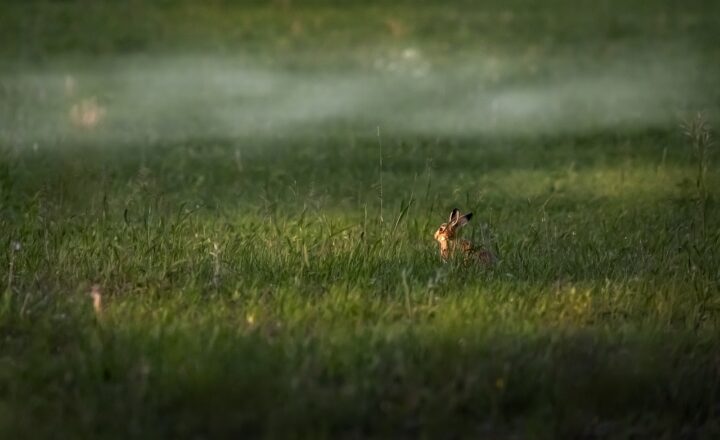The Special Challenges of Panda Parenting: Why Baby Pandas Need Extra Care
November 15, 2024

Panda parenting is a unique and challenging endeavor that captivates the hearts of animal lovers and conservationists alike. The adorable appearance of baby pandas tends to gather enormous attention, but the realities of their upbringing reveal significant challenges. In this article, we will explore the intricate world of panda parenting, the special needs of baby pandas, and what conservation efforts are in place to ensure the survival of these beloved creatures.
1. The Importance of Habitat and Conservation
Pandas are native to the mountainous regions of central China, where they rely on vast bamboo forests for their primary food source. Unfortunately, habitat destruction, primarily from agriculture and urban development, has led to a significant decline in panda populations.
Wildlife conservationists are dedicated to protecting the habitats that are vital for the survival of pandas. Efforts include:
- Creating Protected Areas: Establishing nature reserves to safeguard the remaining bamboo forests and the species that inhabit them.
- Restoration Projects: Initiatives aimed at replanting bamboo and restoring habitats that have been destroyed.
- Community Engagement: Involving local communities in conservation efforts to ensure their support and understanding of wildlife protection.
Efforts to protect their habitats serve not only to conserve panda populations but also to preserve the biodiversity of entire ecosystems.
2. Unique Challenges of Raising Baby Pandas
Baby pandas, known as cubs, face several distinct challenges from the moment they are born. Panda cubs are incredibly vulnerable and require exceptional care during their early developmental stages. Here are some of the unique challenges:
- Extremely Small Size: At birth, a panda cub typically weighs about 100 grams or less, roughly one-thirtieth of its mother’s weight, making them one of the smallest bear cubs. This size leaves them defenseless, requiring constant attention and care from their mothers.
- Nutritional Needs: Baby pandas rely on their mother’s milk for the first six months of their lives. The milk is rich and specially formulated to support their rapid growth. This stage is crucial as the cubs grow to about 1.5 kilograms in the first month alone.
- Low Survival Rate: In the wild, the survival rate of panda cubs is remarkably low, with estimates showing that only about 1 in 1,000 will survive to adulthood. Factors such as inadequate food supply, disease, and accidental injury contribute to these low rates.
The challenges of panda parenting require extraordinary dedication from panda mothers and conservationists alike.
3. Maternal Care and Bonds
A significant element of successful panda parenting is the bond between mother and cub. Mother pandas demonstrate remarkable nurturing behaviors, including:
- Frequent Nursing: Mothers nurse their cubs almost continuously in the first weeks, ensuring they receive essential nutrients to grow strong.
- Close Monitoring: Mothers stay in close proximity to their cubs, keeping them safe and warm. They respond quickly to any distress calls, reinforcing the bond between them.
- Training for Independence: As the cubs grow, mothers teach them essential survival skills, such as climbing trees and foraging for bamboo, which they will depend on throughout their lives.
These nurturing behaviors demonstrate how essential maternal care is to developing strong and healthy panda cubs.
4. The Role of Human Intervention in Panda Parenting
Due to the precarious status of wild panda populations, human intervention has become necessary to ensure their survival. This can include:
- Breeding Programs: Many wildlife reserves and zoos engage in breeding programs aimed at increasing the panda population. These programs often involve artificial insemination and intensive monitoring of pregnancies.
- Hand-Rearing Cubs: In cases where the mother is unable to care for her cubs, specialists will step in to hand-rear the cubs, providing them with the necessary care and nutrition to survive.
- Research and Data Collection: Scientists conduct ongoing research on panda behavior, health, and reproduction to better understand their needs and improve care strategies in both captivity and the wild.
Human intervention is aimed at preventing extinction and ensuring that future generations of pandas thrive.
5. Conclusion: The Future of Panda Parenting
The future of panda parenting depends on the continued commitment of individuals and organizations to protect habitats, raise awareness, and promote wildlife conservation. While raising panda cubs presents unique challenges, continued efforts in conservation and care can help these extraordinary creatures thrive in a world that grows more complex and competitive.
By understanding the special challenges of panda parenting and the importance of human involvement, we can appreciate the efforts being made to safeguard the future of one of the world’s most beloved animals. Through education, conservation, and research, we can ensure that pandas will continue to enchant future generations with their endearing charm and gentle nature.







